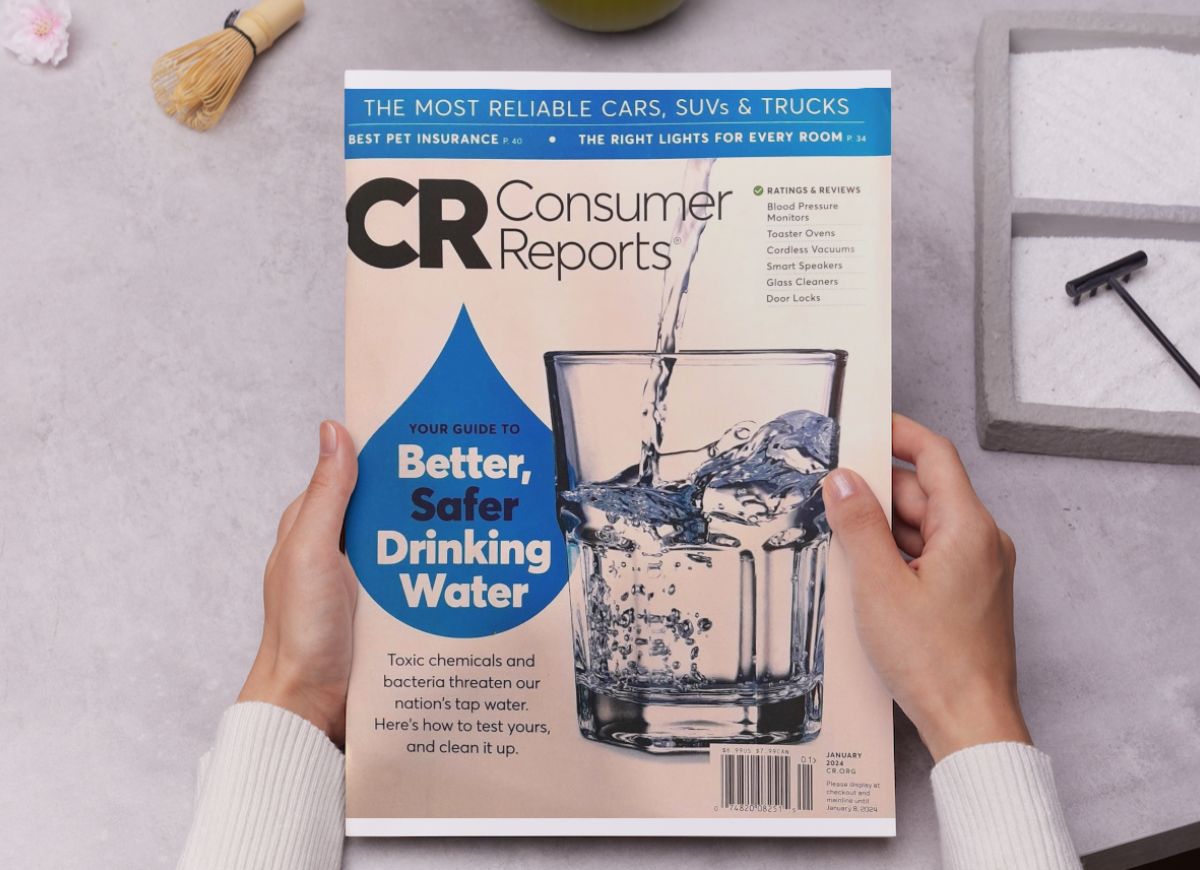

We may earn revenue from the products available on this page and participate in affiliate programs. Learn More ›
Raise your hand if you approach online shopping by searching for the item you want, then filter by “4 Stars & Up.” Even if you leave results unfiltered, do you look at star ratings first, perhaps even before considering price?
E-commerce has been disrupting traditional retail models and norms for decades now—sometimes glaringly—as in the case of nonsensical non-brand Amazon sellers like “BrMstr,” “SUPFINE,” or “KLQQEXA”—and sometimes insidiously, as in the gradual creep of “sponsored” results that appear nearly identical to organic ones, or the primacy of ratings and reviews in nearly every aspect of online purchasing.
Shoppers of a certain age will remember a time when “decision paralysis” not only wasn’t even a thing, it was a concept impossible to conceive of—as even the most prolific consumer goods categories offered only a few different brands or models for purchase. Compare the simplicity of yesteryear, when so many consumers simply bought what was on offer at their local store, with today’s dizzying preponderance of options; without a way to winnow down the possibilities, shopping for even the most mundane of items can become an overwhelming endeavor.
For many of us, ratings and reviews offer the comforting illusion that we’re in control of our own choices. But…are they real? Are they accurate? Are there alternatives? Let’s find out.
RELATED: We Tested 300+ Products in 2023, and These Were Our Favorites
Word of Mouth / Word of Mouse

The single best shortcut for finding quality items, brands, or services? Word of mouth, or its digital counterpart, “word of mouse.” Of course, the source here is key. You don’t trust any old opinion, but those of your closest friends, family members, or even social-media contacts who have proven their good taste and trustworthiness through the many great recommendations they’ve made to you in the past.
Think about your other circles of trust, too, and use them to crowdsource opinions, suggestions, and experiential accounts—Facebook groups, Reddit communities, NextDoor neighbors, message boards, newsletter groups, or even your followers at large. Don’t forget IRL acquaintances, who can also be asked for service and product recs.
Product Review Channels on YouTube

According to Statista, a global data and business intelligence platform, consumers across the world watch an average 19 hours per week of online video content, and one category that is proliferating by virtual leaps and bounds is—you guessed it—product review channels. For every type of consumer good, you can find people who are interested in it, claim to be knowledgeable about it, and want to talk about it while facing a camera. These videos are proving so popular that they’ve spawned another level of scrutiny: channels that review the review channels, like Reviewception!
Are YouTube reviewers trustworthy? Ultimately, that’s in the eye of the watcher. It’s probably smart to take them—and all online review sources, honestly—with a grain or several of salt. Over time (and with views), you’ll begin to develop a sense of which YouTubers give good review, and which are little more than schlocky shills, chasing subscribers to juice their own monetization efforts.
Industry Professionals

Seeking the opinions of those who know their stuff is a no-brainer, but sometimes we forget the most obvious sources of solid recommendations: the professionals who use these products day in and day out in their line of work. Some purveyors and providers will have ulterior motives—your stylist makes a commission when he can upsell you styling foam; ask your mechanic to recommend a good set of snow tires and it might be the most expensive set their shop sells.
Your fishmonger, however, can likely recommend a good fish spatula, your dentist can tell you which electric toothbrushes are worth the money, and your housekeeper would probably be happy to recommend a new vacuum.
RELATED: Our 8 Favorite Online Garden Stores for Seeds, Plants, Supplies, and More
Established Voices

There are several names in the review game that have either made the transition from paper to digital, or risen to online prominence as a trustworthy source. Old standbys like Consumer Reports and Good Housekeeping have been helping people choose the best products for their needs for decades, while others—CNET, Wirecutter, Popular Mechanics, and Byrdie—have distinguished themselves as honest and reliable in an increasingly cacophonous marketplace.
RELATED: 7 IKEA Shopping Secrets Only the Allen Wrench Pros Know
How We Test, Rate, and Review Products Here at Bob Vila

And then there’s BobVila.com. Forgive us for tooting our own horn, but we pride ourselves on being a credible authority when it comes to all things tool, home, and garden—and we’ve recently honed in our focus on product testing, so that our reviews and recommendations are as authentic and applicable to your life as possible.
With a cadre of subject matter experts and content creators who actually, actively use the products we tout, independent of their professional context, BobVila.com offers dependable, knowledgeable, and ultimately invaluable purchasing advice.
Our testing protocol is intended to replicate a regular consumer’s use of the product and often includes a few additional stress tests, to foster even more confidence in the items we shout out to our readers.
The buyer’s guides we publish are informed by expertise, intensive research, and, increasingly, experiential insight. For more information on what that entails, come meet our experts and learn about our methodology by reading “How We Test and Review Products.”
RELATED: The Best Online Furniture Stores
Can You Spot Fake Reviews?

Some humans have been trying to swindle other humans for financial gain since the beginning of, well, humans. Stories abound of snake-oil salesmen, patent medicine purveyors, False Dmitrys and other pretenders to historic thrones, and sneaky would-be suitors. The modern face of flim-flammery often takes the form of fake online reviews.
Just as with cons and scams of all types, swindlers who specialize in online reviews develop ever-more-sophisticated methods to evade detection and perpetrate deception. So while you think you’re savvy enough to spot the fakes among those Amazon product reviews, know that you don’t—and can’t—catch them all.
A Few Telltale Signs

There are nevertheless a few signs to look for if you suspect a review is spurious:
- Poor grammar or spelling
- Vague praise, often just a few words’ worth: “Works great!” or “Love it!” or “Amazing product!”
- A high number of five-star reviews
- Reviews that wax uber-enthusiastic, but mention one not-very-negative “con,” like “Wish it came in more colors” or “Slow shipping but worth it.”
- Similarities among multiple submissions, such as a number of reviews posted in a short span of time, phrases or sentences that appear more than once, unusual words that are repeated, the same use of punctuation (or lack thereof).
- Reviewers whose profiles don’t look “lived in.”
- Language that makes the item sound too good to be true.
- Anything that seems fishy, even if you can’t quite put your finger on it.
Anyone can leave reviews on Amazon for any item, but if you see reviews tagged “verified purchase,” it’s more likely that the review was written by someone who ordered and, ostensibly, used the product.
Extensions and Apps That Help

To equip consumers with more confidence as they shop, browser extensions such as Fakespot have become commonplace. Mozilla, which recently acquired Fakespot, is testing out an integrated review checker feature on its Firefox browser, but it’s still available as an add-on extension for other browsers. Additional review checking apps include Appbot, ReviewMeta, and ReviewIndex. All have their pros and their cons, so you’ll need to evaluate them to find the one that works best for your needs.
